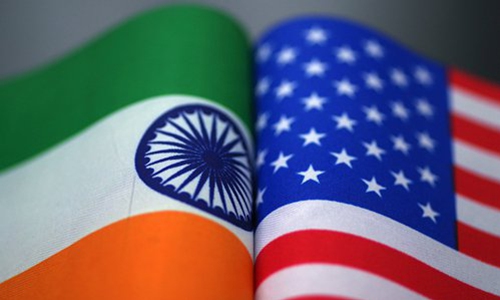HOME >> SOURCE
Trump’s visit may do little to solve US-India trade differences
Source:Global Times Published: 2020/2/25 21:28:41

File photo
Though US President Donald Trump expressed optimism toward an India-US deal, it remains unclear whether the current progress is enough to ease the trade tensions that have been simmering between the world's largest and fifth-largest economies."Our teams have made tremendous progress on a comprehensive trade agreement and I'm optimistic we can reach a deal that will be of great importance to both countries," Trump said on Tuesday. Apparently, the two sides are still engaged in negotiating certain trade arrangements that may require more time to reach an outcome.
In fact, the long-standing trade differences between the US and India have made it difficult for both to reach a consensus in the short term.
For years, US companies have been seeking greater access to the Indian market, which is known for its complexity of limitations on foreign investment. And it is since Trump took office in 2017 that trade tensions between the two countries have escalated as the trade deficit has become one of Trump's top complaints.
In March 2018, the Trump administration imposed fresh tariffs on Indian steel and aluminum, prompting retaliation from the Modi government. Then, in June 2019, the US ended preferential trade status for India, resulting in US tariffs on up to $5.6 billion worth of imports from India. In response, India slapped tariffs on 28 US products.
It remains unknown what the "tremendous progress" is exactly, and India will likely face unprecedented domestic pressure and obstacles if it really agrees to some of the US demand. Yielding to the US' push to eliminate the trade deficit is simply unrealistic due to the structural problem in its economy. And it is also impossible for it to balance the trade by making big purchases as China has done. As for limitations to foreign investments, it is also difficult for India to make concessions to grant greater access to US companies, especially those in the technology sector, as the Modi government has been inclined to protect and cultivate domestic industries.
For India, it is hard to tell which choice is better, to give in to US pressure or risk being the next target of a US trade war.
Meanwhile, the South Asian nation's economic trouble is not just limited to trade. Since hitting a 4.5 percent growth in the July-September quarter, the Indian economy hasn't yet shown any sign of rebound. The coronavirus epidemic in China may also have certain spillover effects on India's economy this year.
Under the current circumstances, India may be hoping for a much-needed helping hand from the US in boosting its sliding economy, but chances of such support are low based on the Trump administration's America First policy.
Fundamentally speaking, Trump's visit will do little to address India's structural economic problems or lift its economy. India still needs to rely on its own reform and opening-up efforts - instead of the US - to boost its economy.
Posted in: GT VOICE